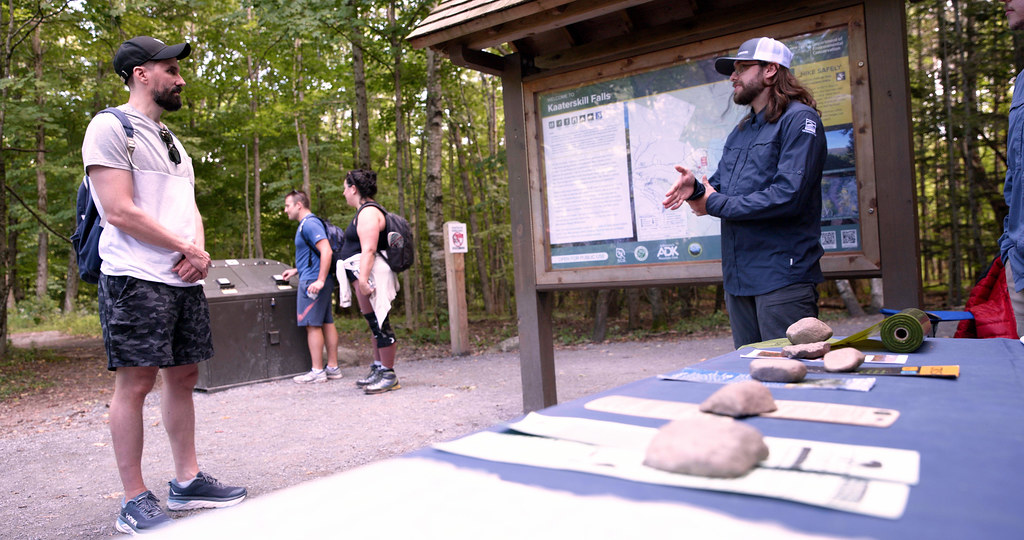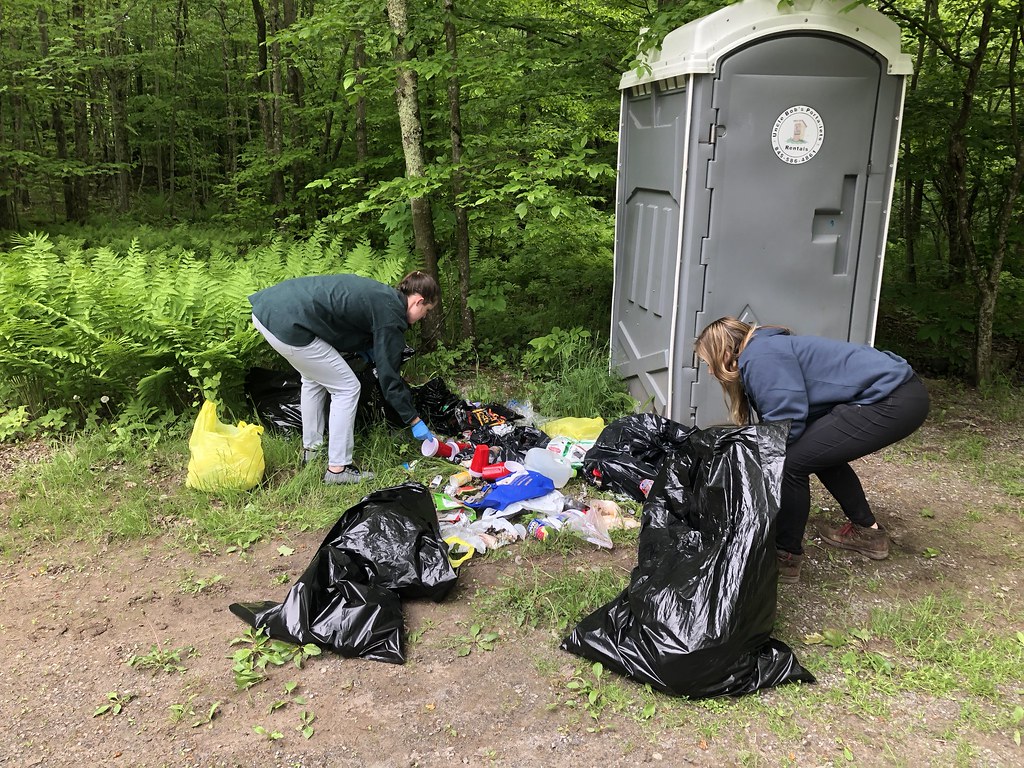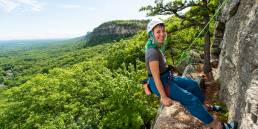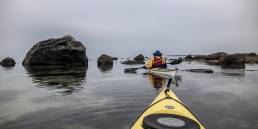The Mountain Life Pale Ale—a beer from Eastern Mountain Sports and West Kill Brewing—is as tasty as it is beneficial. A portion of the proceeds from the launch party on Saturday, February 5, from noon to 4 pm at West Kill Brewing (as well as all can sales) will support the Catskill Center, a non profit dedicated to serving New York’s Catskill Mountains. We caught up with the Catskill Center’s executive director, Jeff Senterman, to talk about the importance of the Catskills, the Center, and the beer you’re going to want to drink.

goEast: Alright Jeff, who are you? Where are you from and what’s your connection to the Catskill Mountains?
Senterman: I grew up in the Hudson Valley, but my family has had a home in the northeastern Catskills at the base of the Devil’s Path range that I spent most weekends at growing up. I spent a few summers in college working as an Assistant Forest Ranger in the Catskills, and also grew up volunteering to care for the trails and lean-tos of the Catskills. After college and several years of work in New England, I came back to the Catskills where I had the opportunity to lead the Catskill Center, where we work every day to protect and preserve the Catskills.
goEast: For people living further north in New York or New England, the Catskills seem to get overlooked more often than, say, the Adirondacks or White Mountains. So pitch me on them: What do you think makes those mountains unique and special compared to the Northeast’s other ranges?
Senterman: I know I’m a bit biased having grown up surrounded by these mountains, but no matter where else I have been, when I’m away from the Catskills, I yearn to be back. These mountains get into your bones. They are filled with nature, history, and represent a huge wilderness area, just a few hours north of New York City—something that makes them even more unique. We have everything from rolling hills to difficult mountains and are host to what many call the most difficult trail in the east: The Devil’s Path. There’s really something for everyone when it comes to the outdoors here.
goEast: Have you been involved with the Catskill Center for a long time? What’s your connection there? What motivated you to work with them and how did you begin?
Senterman: I’ve known about the Catskill Center for many years and began working with them when I came back to the Catskills in 2011 and was working with the NYNJ Trail Conference in the region. In 2015 I was asked to lead the Catskill Center and have been doing that ever since. I feel so incredibly lucky to be able to work for an organization that cares for the mountains that I love so much.

goEast: OK, give me your elevator pitch: What is the Catskill Center?
Senterman: The Catskill Center for Conservation and Development is the oldest environmental organization dedicated to the protection and preservation of the Catskills. Our mission is to protect and preserve the environmental, cultural, and economic resources of the Catskills and we focus our work on three major areas: the stewardship of the region’s natural resources; educating and inspiring the public to care for and appreciate the Catskills; and advocating for the Catskills in Albany to ensure that the Catskill Park and our communities receive the appropriate resources.
goEast: You guys seem unique in that you steward not only for the environment and ecology of the Catskills, but also the region’s economy and culture. How do the human and natural elements mesh in those mountains?
Senterman: The Catskill Park is unique in that its 700,000+ acres is a mix of both public and private land. Our communities are part of the park and the park is part of our communities. With that in mind, environment and community are really two sides of the same coin here in the Catskills. We work hard to show that connection, and build on protecting our natural resources, while ensuring our communities continue to thrive.
goEast: What tangible impacts stem for your work in the Catskills?
Senterman: If nothing else, our work to protect the region provides New York City with 90 percent of its drinking water. It’s thanks to this clean and abundant drinking water, that NYC has been able to grow and thrive. Our work also has many impacts here in the region. The Catskills Visitor Center and our Catskill Stewards Program meet and educate tens of thousands of visitors every year. Our land trust protects lands across the region. Our advocacy brings dollars to the region to maintain trails, protect natural resources, and benefit communities.

goEast: Is there a specific project you guys have a hand in now that you’re particularly excited about?
Senterman: Our Catskill Stewards Program is entering its fifth year in 2022 and we’re very excited that it has been able to grow and serve more and more of the public every year. The program focuses on busy locations in the Park and we staff those locations with specially trained Stewards who greet the public, educate them on the Catskill Park, and provide information on how to recreate responsibly in the region. To date we’ve been able to greet more than 200,000 visitors since 2018. The program is a partnership between the Catskill Center and the NYS Department of Environmental Conservation, along with a number of funders. In 2022 we’re looking forward to having Stewards greeting visitors at Kaaterskill Falls, Peekamoose Blue Hole, Platte Clove, and along the Devil’s Path.
goEast: What are some of your favorite hikes or other activities in the Catskills?
Senterman: My favorite hike in the Catskills in the Hunter Mountain loop that begins in Spruceton Valley (just down the street from the West Kill Brewing). Beginning with the Spruceton Trail, you gently climb Hunter, first passing the John Robb Lean-to, then reaching the summit and the Fire Tower that is located on the summit. From the summit, you head down to the Devil’s Acre Lean-to, and then follow the Devil’s Path down to Diamond Notch. From there, head out the Diamond Notch Trail back to the Spruceton Trailhead. In about 9 miles you get to experience almost all of the best that the Catskills have to offer. Vistas come often, you explore two lean-tos, and you get to clime one of the six fire towers that are located in the Catskill Park.
goEast: So, someone buys a beer thats helping support you guys—How are they helping?
That beer directly supports the work to protect and preserve the Catskills. Better visitor services, more Stewards, more advocacy in Albany, work to stop invasive species, and more protected lands. Those beers translate directly into on the ground work across the Catskills.
goEast: What’s your favorite West Kill brew?
West Kill Brewing is one of my favorite places to enjoy a drink and hang out with friends in the Catskills. It’s always a stop after a hike in the Spruceton Valley and you can find me enjoying a Kaaterskill IPA when I’m there.

Ryan Wichelns
Ryan was goEast's only editor from its launch in 2016 until 2023. Now, he's the founding editor of Trails Magazine, the only print publication for backpackers and people who sleep in the dirt. When he's not wordsmithing, he's skiing, hiking, mountain biking, trail running, and more in Colorado's San Juan Mountains and beyond.
Related Posts
April 12, 2024
Explore Like a Local: The Outdoor Mecca of North Conway, NH
There's a lot to love about this New…




